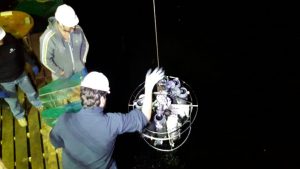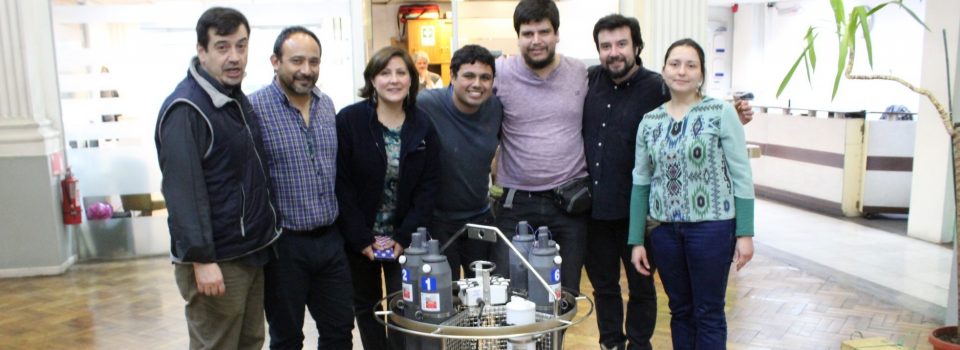IFOP conducts spawning stock of anchovy evaluation in III and IV Regions
September 18th, 2017 Between August 27 and September 25, ASIPA research cruise carried out “Evaluation of the spawning stock of anchovy in III and IV Regions, year 2017”. The head of the project is Hernán Reyes, the cruise chief is Magister in oceanography Catherine Grendi, both from the Department of Oceanography and Environment (DOMA) from IFOP..
Between August 27 and September 25, ASIPA research cruise carried out “Evaluation of the spawning stock of anchovy in III and IV Regions, year 2017”. The head of the project is Hernán Reyes, the cruise chief is Magister in oceanography Catherine Grendi, both from the Department of Oceanography and Environment (DOMA) from IFOP..
The overall objective of the cruise is; To quantify by means of the egg production method (MPH) the anchovy spawning biomass, which is located in the coastal zone from the northern limit of III (26 ° 03’S) to the southern boundary of the IV (32 ° 10’S) Chile.
There will be 464 egg sampling stations, 50 of which will carry out oceanographic sampling with Roseta and CTD for the variables temperature, salinity, oxygen, chlorophyll, nutrients and phytoplankton. Zooplankton is also sampled vertically with a WP2 network from 100 meters and phytoplankton with a net from 50 meters.
During August, two modern devices were acquired to improve IFOP’s researchers work capacity at the Fisheries Development Institute. The pieces were obtained with Corfo funds under the existing performance agreement as it was explained by Pamela Denmark Palma, head of IFOP Finance Division .
Hernán Reyes Rivas, Section Chief of Oceanography referred to the new equipment “during this cruise these devices are being used for the first time. The size of the instruments makes it ideal for working on smaller boats. It is an intelligent ROSETA brand Sea Bird model 55. It has six oceanographic bottles of 4 liters and can work up to 600 meters deep. For the IFOP work it was coupled to a Sea Bird Model 19 plus v2 CTD that IFOP acquired in 2016.
The device takes water samples at depths that are preprogrammed and works with the CTD pressure sensor. It facilitates the field work since it makes the sampling faster, less effort and eliminates the uncertainty of the actual depth of sampling, which is what happens when working manually, ie with oceanographic bottles, messengers and inclinometer.
